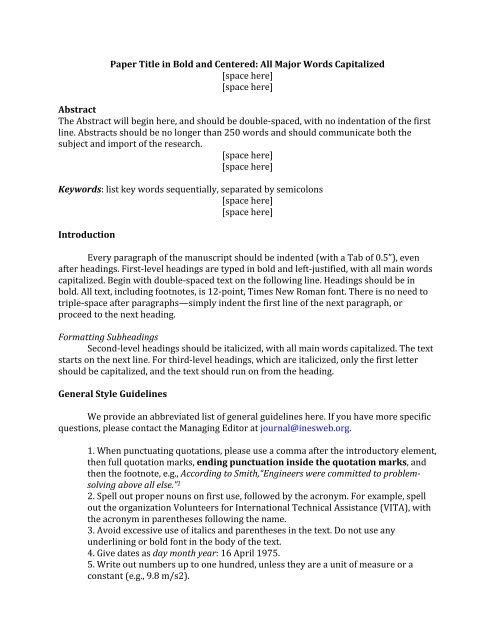Optimizing Golf Equipment for Enhanced Performance
The journey towards golfing excellence is significantly influenced by the careful assessment and selection of equipment. Through academic research, we can uncover the complexities of golf gear design and functionality, which are essential for enhancing performance. This exploration delves into club head configurations, shaft characteristics, and grip ergonomics to equip golfers with insights that can elevate their skills and provide a competitive edge on the course.
The Role of Materials Science in Golf Club Design
Materials science is pivotal in crafting golf clubs, affecting both their performance and longevity.
Innovative Materials: Contemporary golf clubs are constructed using high-strength materials such as titanium, carbon fiber, and steel alloys to enhance durability while minimizing weight and optimizing energy transfer.
Composite Structures: The use of composite materials like carbon fiber allows designers to create intricate clubhead shapes that improve ball trajectory and distance.
| Material | Characteristics |
|---|---|
| Titanium | Lightweight, highly durable, corrosion-resistant |
| Carbon Fiber | Sleek design with high stiffness; excellent energy transfer properties |
| Steel Alloys | Diverse strength options; customizable based on specific needs |
Shaft Dynamics: Key to Ball Control
The shaft is a vital element influencing shot trajectory, distance, and accuracy. Its dynamics are crucial for effective ball control.
Shaft Material & Flex Profile:
The material used in shafts along with their flex profile greatly affects performance. Steel shafts offer enhanced stability while graphite shafts provide increased flexibility conducive to greater distances. The flex profile—measured in cycles per minute (CPM)—indicates how much a shaft bends during a swing: stiffer shafts (higher CPM) yield lower launch angles but more precision; flexible shafts (lower CPM) promote higher launches but may sacrifice some control.
| Shaft Material | Flex Profile (CPM) | Description | |||||||||||||||||||||
|---|---|---|---|---|---|---|---|---|---|---|---|---|---|---|---|---|---|---|---|---|---|---|---|
| Steel | Stiff (60+)< td > Stability & control with less launch potential < tr >< td > Graphite | Regular (50-65)< td > Flexibility & distance enhancement < tr >< td > Titanium | Flexible (40-55)< td > High launch capability & forgiveness
Grip Ergonomics: Connecting Golfer with GearThe grip serves as the critical point where golfers engage with their clubs—affecting swing precision and fluidity through ergonomic design principles. Catering to Hand Variability: Grips come in various sizes tailored to accommodate different hand shapes. Selecting an appropriate grip ensures comfort during play while minimizing fatigue—custom fitting can further enhance this connection by aligning grips perfectly with individual hand contours. Affecting Swing Mechanics: The diameter and texture of grips influence grip pressure as well as wrist positioning during swings. Thicker grips often encourage lighter holds leading to smoother swings whereas thinner grips may require stronger pressure which could restrict wrist movement. Harnessing Predictive Analytics for Equipment EnhancementThe integration of advanced analytics has revolutionized how golfers optimize their performance through personalized equipment recommendations based on data analysis techniques. By employing predictive modeling alongside detailed data assessments—including biomechanical factors—the right gear setup can be identified that aligns perfectly with each player’s unique physiology. Utilizing sophisticated algorithms enables predictions about performance outcomes based on specific equipment features. Simulation models analyze numerous shot trajectories helping identify ideal combinations of club designs tailored specifically for individual swing styles. Moreover, these analytics also address player weaknesses by suggesting adjustments that compensate for technical flaws—for instance, players prone to slicing might benefit from draw-biased clubs designed to promote straighter shots. Technological Innovations in Golf Equipment DesignThe evolution of technology has dramatically transformed golf equipment design leading directly toward improved player performance through innovative engineering practices. One notable advancement includes variable geometry club heads featuring adjustable weights allowing players fine-tuning capabilities over launch angles or spin rates according to varying course conditions. Additionally advancements within face technologies have minimized vibrations promoting better energy transfer resulting ultimately into faster ball speeds. Furthermore modern golf balls utilize specialized constructions aimed at optimizing overall playability—multi-layer designs enhance spin generation while reducing drag via improved dimple patterns ensuring longer more accurate tee shots. the academic study surrounding optimization within golfing equipment offers invaluable insights enabling players seeking enhanced performances. Unlocking Your Potential: The Science Behind Golf Equipment OptimizationMeta TitleUnlocking Your Potential: The Science Behind Golf Equipment Optimization Meta DescriptionDiscover how optimized golf gear enhances performance. Explore essential equipment types, benefits, and tips for choosing precision gear to elevate your game. Understanding Golf Equipment OptimizationGolf equipment optimization refers to the strategic selection and usage of gear to maximize performance on the golf course. Various elements contribute to this optimization, from club design to ball technology. Understanding these components can help golfers make informed decisions that improve their game. Essential Golf Gear Components1. Clubs
2. Balls
3. Accessories
The Role of Technology in Golf EquipmentPerformance Enhancing InnovationsRecent advancements in technology have revolutionized golf gear. Here are some innovations that have positively impacted golf performance:
Case Studies: Players and Their GearConsider the significant impact of equipment choices on professional golfers’ performances: Example 1: The Impact of Custom FittingA prominent study in sports science highlighted that golfers who underwent club fitting improved their accuracy by an average of 20%. Personalization allows for adjustments specific to playing style. Example 2: Material AdvancementsResearch conducted on ball technology revealed that golfers using urethane-covered balls achieved up to a 10% increase in spin during approach shots, demonstrating the importance of gear selection. Benefits of Using Precision Golf Gear
Practical Tips for Choosing Golf Equipment
HTML Table: Comparison of Golf Balls
First-Hand Experience: A Golfer’s Journey of Gear OptimizationJohn, a dedicated amateur golfer, reports that after being fitted for clubs and transitioning to a higher-quality ball, his handicap dropped from 18 to 12 within a single season. John’s experience underscores the vital relationship between equipment choice and on-course performance. ConclusionUnderstanding the science of golf equipment optimization is crucial for players looking to enhance their performance. Through awareness of technological advancements, proper gear selection, and practical engagement with offers like custom fitting, golfers can embark on a journey toward unlocking their full potential on the course. By implementing these insights into your game, you’ll be well on your way to improved performance and a more enjoyable golfing experience. You might be interested in …
Golf Lessons: Enhancing Performance Through Expert Instruction**Golf Lessons: Enhancing Performance Through Expert Instruction** Golf lessons provide an invaluable opportunity for golfers of all skill levels to improve their performance. Expert instructors analyze an individual’s swing technique, identify areas of improvement, and provide tailored guidance to rectify errors. Through a combination of drills, exercises, and on-course coaching, golf lessons can significantly enhance a golfer’s ball-striking ability, accuracy, consistency, and overall game strategy. By refining their swing mechanics and gaining a deeper understanding of the game, golfers can elevate their performance, reduce their handicap, and maximize their enjoyment on the course. 
Enhancing Golf Putting Mastery: Unleashing Mechanical and Strategic Brilliance for Optimal Performance**Holistic Enhancement of Golf Putting: Mechanical and Strategic Foundations for Performance Optimization** Golf putting, an intricate skill requiring precision and strategic acumen, can be significantly enhanced through a holistic approach that encompasses both mechanical and strategic aspects. This article investigates the biomechanics of putting, exploring grip, stance, and swing dynamics to optimize ball control and accuracy. Furthermore, it analyzes the cognitive strategies employed by skilled golfers, including green reading, break estimation, and mental focus, to improve shot selection and execution. By developing an understanding of the interplay between mechanics and strategy, golfers can optimize their putting performance, reduce the number of putts per round, and enhance their overall game. This comprehensive discourse provides insights into the critical elements of putting, empowering golfers with the knowledge and techniques necessary to master this vital aspect of the game. Through structured drills, technological aids, and expert guidance, golfers can refine their mechanics, sharpen their strategic thinking, and achieve consistent putting excellence. 
the best crossover we’ve ever seen #SNL #KristenWiig #MayaRudolph #AndyCohen #ShortsExperience the ultimate crossover event with #SNL icons Kristen Wiig, Maya Rudolph, and Andy Cohen. Witness the electrifying fusion of comedy and entertainment like never before. Stay updated for the most unforgettable moments on the horizon. #KristenWiig #MayaRudolph #AndyCohen #Shorts #SNL |



